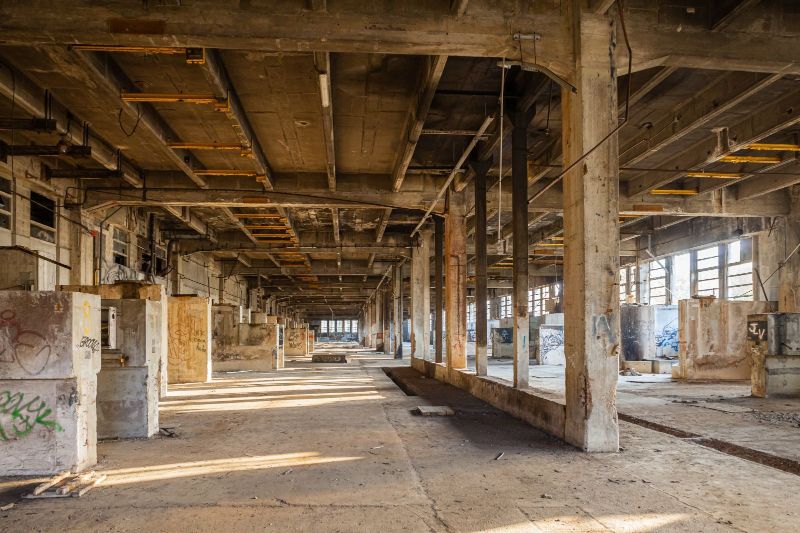Asbestos is a naturally occurring mineral fiber that was widely used in construction and other industries throughout the 20th century due to its heat resistance, strength, and insulating properties. However, exposure to asbestos has been linked to a variety of serious health problems, including lung cancer, mesothelioma, and asbestosis. As a result, asbestos has been banned or restricted in many countries, and its use is highly regulated in others.
If you own or manage a building that was constructed before the 1980s, it is important to have an asbestos inspection to determine whether or not there is asbestos present and to what extent. In this blog, we will explore how asbestos inspections work, why they are important, and what to expect during the process.
Why Are Asbestos Inspections Important?
Asbestos is a known carcinogen, which means it has the potential to cause cancer. When asbestos fibers are inhaled, they can become lodged in the lungs, leading to a range of respiratory problems. This is why it is crucial to identify and manage any asbestos-containing materials in your building.
If asbestos-containing materials are left undisturbed and in good condition, they may not pose a significant risk. However, if these materials are disturbed or damaged, such as during a renovation or demolition project, the asbestos fibers can become airborne and be inhaled by anyone in the area. This is when the risk of health problems increases dramatically.
Asbestos inspections are therefore an essential step in managing asbestos-containing materials in your building. They can help you identify the location and condition of any asbestos-containing materials, assess the risk they pose, and determine whether any action is needed to manage the risk.
How Do Asbestos Inspections Work?
An asbestos inspection is typically conducted by a certified asbestos inspector who has been trained to identify asbestos-containing materials and assess their condition. The inspector will first conduct a visual inspection of the building to identify any materials that may contain asbestos, such as insulation, ceiling tiles, or flooring.
Once potential asbestos-containing materials have been identified, the inspector will take samples for laboratory analysis. This is typically done by using a specialized tool to scrape a small amount of material from the suspected source, such as a piece of insulation or a section of flooring. The samples are then sealed in a container and sent to a laboratory for analysis.
Laboratory analysis is necessary because asbestos fibers cannot be identified by visual inspection alone. The samples are analyzed using polarized light microscopy, which allows the technician to identify the presence of asbestos fibers and determine their type and concentration.
Based on the results of the laboratory analysis, the inspector will prepare a report detailing the location and condition of any asbestos-containing materials found in the building, as well as any recommended actions to manage the risk. These actions may include encapsulation (sealing the asbestos-containing material to prevent fiber release), removal, or ongoing monitoring and management.
What to Expect During an Asbestos Inspection
If you are planning to have an asbestos inspection conducted in your building, it is important to understand what to expect during the process. Here are the key steps:
- Schedule the Inspection: Contact a certified asbestos inspector to schedule an inspection of your building.
- Preparation: Before the inspection, make sure the inspector has access to all areas of the building that may contain asbestos-containing materials, such as crawl spaces, attics, and mechanical rooms. Clear any clutter or obstacles that may prevent access to these areas.
- Visual Inspection: The inspector will conduct a visual inspection of the building to identify any materials that may contain asbestos.
- Sample Collection: If potential asbestos-containing materials are identified, the inspector will take samples for laboratory analysis.
- Laboratory Analysis: The samples will be sent to a laboratory for analysis, which typically takes a few days.
- Report Preparation: Based on the results of the laboratory analysis, the inspector will prepare a report detailing the location and condition of any asbestos-containing materials found in the building and any recommended actions.
- Review the Report: Review the report carefully to understand the results of the inspection and any actions that may be necessary.
- Take Action: If asbestos-containing materials are found in the building, take the necessary actions to manage the risk. This may include encapsulation, removal, or ongoing monitoring and management.
It is important to note that asbestos inspections should only be conducted by certified professionals who have the proper training and equipment to safely handle asbestos-containing materials. Attempting to identify or remove asbestos on your own can be extremely dangerous and should be avoided.
Asbestos inspections are a crucial step in managing the risk of asbestos exposure in your building. By identifying the location and condition of any asbestos-containing materials, you can take the necessary actions to protect yourself, your employees, and anyone else who may come into contact with the building.
If you own or manage a building that was constructed before the 1980s, it is important to schedule an asbestos inspection to ensure the safety of everyone who enters the building. Contact us today to schedule an inspection and take the necessary steps to manage any asbestos-containing materials in your building.

